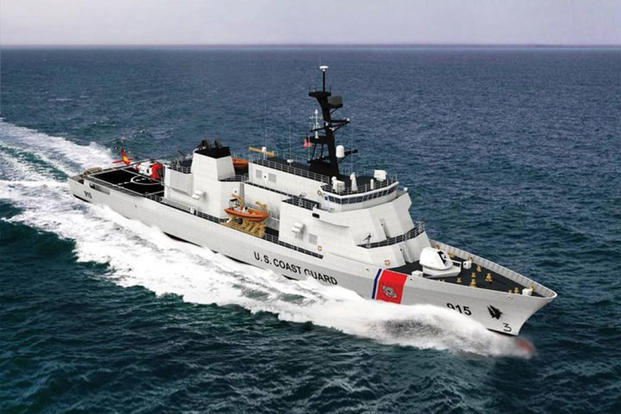It's not much bigger than a dishwasher, but the Leonardo DRS permanent magnet motor, used for years to power oil rigs, will help propel the Coast Guard's new offshore patrol cutter, or OPC.
The Arlington, Virginia-based company was awarded a $10.7 million contract in 2017 to furnish nine hybrid electric drive systems for the Heritage-class OPC, the first of which is under construction in Panama City, Florida, by Eastern Shipbuilding Group.
Leonardo DRS is currently building its second system for the second OPC, the Chase, even as Eastern Shipbuilding just began cutting steel in January for the first ship in the class, the Argus.
Two 625-horsepower permanent magnet motors will power the OPC’s hybrid-electric drive system, designed to provide auxiliary propulsion to the ship's main diesel engines. The system will increase fuel efficiency, decrease emissions and reduce wear and tear on the main diesel engines, according to Greg Reed, senior director for business development in Leonardo DRS' naval power unit.
Reed said the auxiliary system will allow the ship to operate at slow speeds or "low load," reducing the need to run diesel engines at low loads, which causes significant stress and deposits buildup.
"[We think the Coast Guard] selected this out of maintenance concerns," Reed said during an interview at the Surface Warfare Association's annual conference in January. "But the other thing is, the U.S. is behind on this technology. Navies internationally, with their frigates and other ships, if they aren't using full-on electric drives, they have hybrid-electric drive systems."
Leonardo DRS' 30- x 26- x 8-inch permanent magnet motor has been used by the oil and gas industry for more than 20 years for drive applications. But in terms of ship propulsion, larger versions have been patrol-tested by the Republic of Korea's Navy, which uses them to power the Daegu-class multipurpose frigates, also known as FFX II.
Working alongside -- and in many cases instead of -- the Daegu class' gas turbine engines, the Leonardo DRS motors provide quiet operations at speeds up to 8 knots -- slow, Reed said, but well-suited for anti-submarine warfare operations and other types of patrols.
The company hopes the U.S. Navy might see the benefits of such a propulsion system for its new frigate, the FFG[X]. According to Reed, in addition to offering fuel savings and whisper-quiet propulsion, it provides greater power efficiency than induction motors and redundancy in case main propulsion systems fail.
"We are trying to convince the Navy that this isn't just about fuel savings and efficiency, it's about capability," he said.
Reed said Leonardo DRS is excited to be working with Eastern Shipbuilding Group, which is expected to deliver the Argus to the Coast Guard in 2021. Work on the 360-foot ship restarted this month following a hiatus after Hurricane Michael nearly wiped out Eastern's shipyards last October.
In addition to cutting steel for Argus, Eastern is pulling together the propulsion systems and machinery for the Chase. The Coast Guard intends to buy 25 OPCs, according to the service.
-- Patricia Kime can be reached at Patricia.Kime@Military.com. Follow her on Twitter @patriciakime.










